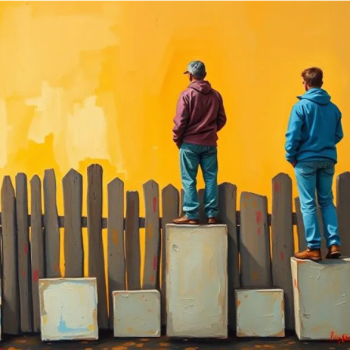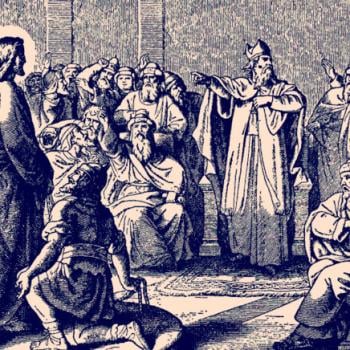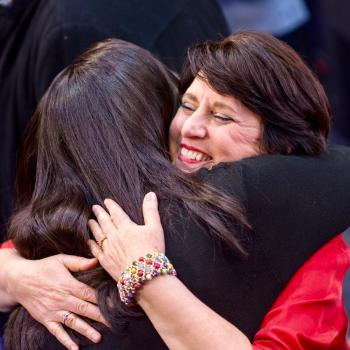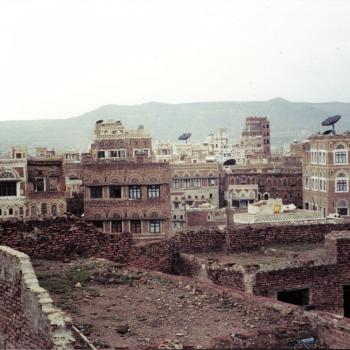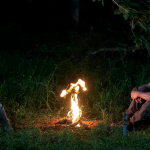You probably know by now that The Legend of Korra has returned for a second season on Nickelodeon. Originally planned as a single 12-episode follow-up to the award-winning Avatar: The Last Airbender, The Legend of Korra been expanded to four seasons, much to the delight of its loyal fans.
Without getting too bogged down, the Avatar series occurs in an Asian-influenced world containing four nations associated with the classical elements (air, water, fire, earth). Some within each nation are able to manipulate their nation’s respective element through a form of “psychokinetic” martial arts called “bending.” The Avatar is the only one who can master all four elements and is charged with maintaining balance and peace. The Legend of Korra follows the new avatar, Korra, an impulsive yet courageous young woman from the Southern Water Tribe who is tasked with becoming the guardian and enforcer of balance within the world.
We’re several episodes into the second season, and it’s off to a brilliant start. Artistically, it’s clearly on par with previous seasons. Character and plot developments are developing quickly, and the dialogue is as rich and humorous as ever. Since I hate it when people blow shows for me, I won’t really talk too much about the plot so far. (Also, that’d be really silly to do after only a handful of episodes.) However, I do want to note three themes that I’ll be keeping an eye on, and raise a few corresponding questions.
1) Coming of Age
I have to confess, I’m kind of jaded when it comes to youthful, headstrong characters. I know my own pride, so I chafe when I see it in others. What’s more, I work with students of a certain age whose choices… well, I must confess that sometimes I wish there was an “override” button. Therefore, watching Korra struggle with coming into her own as the Avatar while accepting her elders’ instruction can be tough for me.
It’s a testimony to the creators that they can write a believable young adult in transition. The creators are capturing well the struggle between developing a cautious humility, and the healthy independence required to make your way in the world as a functional adult. Recently, a friend said it well: “She’s obnoxious, but I’m waiting for her to get better.” What I’m curious to know is what does “better” look like? What picture will we be given of a mature and maturing Korra?
2) Modernization and the Traditional World
One of the big tension points Korra must navigate is the technological and societal jump between The Last Airbender and The Legend of Korra. Specifically, agrarian, pre-technological societies have become urbanized, industrialized, and capitalistic with cars, commerce, electricity, and steam-engine transport of various kinds. While forming the background of the last season, and functioning as key plot points, these developments weren’t really dealt with at a thematic level.
Early indications in this season are that the struggle between those caught up in the zeitgeist of the modernizing, technological world and others trying to preserve the older, more spiritual path could be a key one. It should be interesting to see the way the creators manage the tension. Will it ultimately amount to an unmitigated rejection of the new ways and a repentant embrace of tradition, or social criticism that points towards a mediating third way? In a technologically innovative society such as our own, these questions are still live ones. Amidst all of the advancements and blessings, has something been lost in the mix? Are we more comfortable, yet spiritually empty? Is there an unseen, spiritual price being paid here?
3) The Spiritual World
Of course, the season’s big theme concerns the spiritual world. The current season is named “Book 2: Spirits” and promises to explore Korra’s connection to the spirit world in greater detail. (As Avatar, one of Korra’s jobs is to keep the relationship between the human and spirit worlds healthy.) One idea that’s already attracting my attention is that the spirits are “neither good nor evil,” but simply in need of balance between their dark and light sides.
That seems to conflict with the intuitive distinction between good and evil that Korra and her friends make in the human realm. As distinct from the Christian view, where the God who is light and has no darkness is ultimate and ultimately good, we seem to have a world whose ultimate spiritual reality is non-moral at its base. I’m left with a bunch of questions in need of answers: Does “good” in the Avatar’s world simply consist in balancing dark and light? If so, what do “dark” and “light” really mean? Is the series’ point that the spirits are not the ultimate reality, but really only another, parallel side of reality that affects the human world but is still yet subordinate to a higher reality? If so, what is that higher reality?
Beyond that, I’m wondering how that connects to the eschatology of the Avatar’s world. The Avatar reincarnates to maintain the world’s balance, and faces new battles and new enemies in each age, but where is it all going? There was a first Avatar, but will there be a last? Will there be some final triumph of good over evil, a final harmony between the nations that transfigures the world? Or, is it simply a cycle of unsteady balance-keeping into eternity? I mean, that’s great for future seasons, but kind of depressing to think about.
A Note For Parents
One final note for parents who perhaps didn’t realize their kids were seeing all of this spiritual stuff as they watched Korra. Instead of quickly forbidding them from watching it because you’re worried they might take up meditation and fire-bending, try watching it with them. It’s a pretty wholesome, quality show that presents a great chance to model good discernment and cultural engagement. Teach your kids to enjoy the good of the show, while still critically weighing things against Scripture. Plus, it’s another excuse to hang out with your kid.


